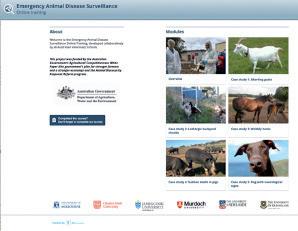
12 minute read
BUSINESS
BUSINESS Business Agility Part 1: Your Clients
Remaining agile is a key tactic for success in any business. The external and internal forces that impact our businesses are ever present andconstantly changing. As such, it’s become a necessity to have a scaffold for change management within any business strategy. Failing to prepare for change, or to embrace change will ultimately result in poor business performance.
Advertisement
We know that change is here to stay, but how can we identify it early? How can we prepare for it? How do we manage it?
While we all know the market or industry we work in, how proactive are we with our ongoing research and understanding of the space? There are specific areas that you can look at to get a better understanding of your market, and I have provided some examples below to help guide you.
Using these four key stakeholders, we will cover some basic market research tactics over four articles.
■ Client ■ Your industry (and associated governing/ regulatory bodies) ■ Your suppliers ■ Your community
This month, weíll delve into how we can best serve our clients by being agile and adaptable.
Your clients
You can understand what your client wants through analyzing their purchasing behavior, client surveys, and requesting specific feedback on their experience. However, we don’t often delve much deeper than what our client wants in the immediate term.
So that we can be prepared for the client’s future needs, it’s essential that we try and pre-empt what these needs may be. Preparing for their future demands will not only place your business in the prime position to be their first-choice provider; but it also helps strengthen the bond between you and the client.
Identify their future needs
As an expert in your field, you are most likely best positioned to know what your clients may need in six months, 12 months, or two years! However, it’s also useful to look for trends in the way they are engaging with your services. As an example, let’slook at the engagement of anew client and their new puppy with your practice. We’re using a micro example here, but in reality,you will need to apply this to your client group.
Anew pet parent will likely come with many questions on that initial appointment -- and you are all very familiar with these appointments and what your clients and patients need (so I won’tgo into detail here!) However, let’s look at how and why they engage with us:
■ How did they initially engage with your business e.g., online booking or phone call? ■ How do they like to receive information e.g.,
SMS reminder or phone calls? ■ What additional (non-clinical) information have they requested e.g., puppy school ■ Why did they seek your service above others e.g., location, reputation, referral? Answering these questions can help you preempt their future needs. For example, if they initially connected with your business through an online booking app, and they prefer to receive SMS or email reminders, digital communication will likely be an important part of your service for them. Appreciating this, consider what other ways you can engage with them via this medium, and how you can make it easier for them to work with you. Asmentioned above, we’re using a micro example here. However, you will need to apply this same analysis to your entire client base to determine what the majority of your clients are likely going to need from you in the future.
Preparing for change
Agility is a skill that needs practice. As individuals we react to change in our own unique way, and we often improve our reactions to change as we get more experience with it. As a leader orbusiness owner, you will be the driver of any required change in your business. So how can you prepare yourself, your team, and your business for change?
■ Understanding what is likely to change As we have just discussed, identifying what your clients’ future needs may be is key in preparing for change, and ensuring your business will remain agile in the future.
■ Research Once you have identified what you need to prepare for,start researching. Look into what the operational requirements are, the costs, any impact to services or lost time as a result of implementing a change.
■ Consolidate your research and plan Summarize and prioritize your findings. Detail timelines and estimated costs. Don’t forget to include any additional revenue or profit growth which may be associated with these changes.
■ Communicate your findings With a clear plan (including your key actions prioritized), communicate to your team and stakeholders. Outline your expectations and assign tasks and responsibilities as appropriate.
Remember that you don’thave to do this preparation alone. Lean on other senior stakeholders and share the jobs. Seek a variety of opinions and insights during this phase. This is a preparation phase --it may be 6months or 12 months before you begin any change process. However,preparing is key to remaining nimble in a fast-moving industry.
Managing change
There are many wonderful books and articles about change management, and it’seasy to get lost down rabbit holes in this topic. To stay on topic, we shall stick within the context of this article. Specifically,let’slook at how agility can be achieved and sustained through effective change management.
■ Building a positive change culture Creating a culture of agility and adaptability starts well before we identify the future needs of our clients. Before we can commence on the change journey, we need to foster a positive attitude towards change within our teams. Once this foundation is laid, you can build strategies and coping mechanisms to help support the change process; and in addition, build resilience and flexibility within your team. There are many articles and books on managing teams through change and building resilience. I strongly encourage you to review a few of these before proceeding with any large change projects. ■ Resilience in your business Believe it or not, not all plans work out as intended! You will need to ensure your business is operationally and financially resilient to withstand any negative impacts that internal or external changes may have on your business. To some extent this requires having an adequate cash flow and savings to cover you for any lost time, or potential loss in revenue. Operationally, you should ensure your processes and teams are able to adjust quickly to any unexpected changes.
Being agile requires constant review of your operational practices and remaining open to changing if it is in the best interest of your client, team and business. Businesses often have great success initially but may stagnate after some time. This can be because there has not been a proactive approach to reviewing operational changes and looking out for potential changes required.
Next month we’ll discuss how you best prepare your business for any changes related to industry trends or demands. For more information you can reach me via email info@graycounsel.com. You’re also welcome to send through any requests for specific article topics to the same email address. I’ll do my best to accommodate your requests.
Michelle Gray
My journey into the veterinary industrybegan with nursing. Now,many years later,Iam privileged to lead multidisciplinary teams across Australia. I have worked in leadership roles within universities, corporate human health care, and media industries in addition to my work in the veterinary field. I have an MBA (research) and am on my way to commencing a PhD next year in veterinarybusiness and not-forprofit industry. When I’m not working my day job, I also support small business through my consulting firm Gray Counsel. Email me at info@graycounsel.com

Vaccine rollout for koalas
From page 1 Project collaborators and partners have included both the Queensland and NSW state governments, the federal government, wildlife hospitals, the RSPCA, Lone Pine Koala Sanctuary, and CSIRO Manufacturing, with support and donations coming from individuals, community and carer groups, and overseas partners. Donations to the research can be made at www.usc.edu.au/koala. ■ ANNE LAYTON-BENNETT

Free online emergency animal disease training
From page 1 The package includes six self-paced interactive case studies, each taking approximately 30 minutes to complete and featuring a variety of species including horses, backyard chooks and a dog.
This continuing education package was collaboratively developed with contributions from all of the Australian veterinary schools, IT partner Epi-Interactive and members of the veterinary profession. Funding from the Australian Government’s Agricultural Competitiveness White Paper – the Government’s plan for stronger farmer and a stronger economy – and the Australian Biosecurity Response Reform Program has ensured this valuable resource is freely available to the veterinary profession. To brush up on emergency animal disease management, please visit eadonline.com.au.
COVID-19 linked to heart disease in cats and dogs
From page 1 on a rectal swab, and two other cats and a dog displayed antibodies two to six weeks after they developed signs of cardiac disease. Lead author Luca Ferasin, TRVRC’s Head of Cardiology said while the study reported the first cases of cats and dogs affected by the COVID-19 alpha variant, it also highlighted the risk that companion animals could also become infected.
“Wealso reported the atypical clinical manifestations characterised by severe heart abnormalities, which is a well-recognised complication in people affected by COVID-19 but has never described in pets before. However, COVID-19 infection in pets remains a relatively rare condition, and based on our observations, it seems that the transmission occurs from humans to pets, rather than vice versa,” Ferasin said.
All affected animals made a ‘remarkable improvement’ with cage rest, oxygen therapy,acute diuresis and, in some cases, antiarrhythmic therapy with sotalol and fish oil supplementation before being discharged on oral medications after a few days of intensive care.
■ ANNE LAYTON-BENNETT
Abattoir cruelty footage shocking but ‘unsurprising’
From page 3 “The only encouraging aspect is that there is now stunning in so many more Indonesian abattoirs,” she said.
However,Foster added that there is a dispiriting lack of desire from the industryto effect change.
“Change only occurs after activists expose a well-known problem; think Awassi Express where industry representatives, shipboard vets, stockpersons and the department all knew it happened and even filled out or received the appropriate shipboard reports but none did anything,” she said.
“None tried to change it or prevent it or suggest that it be reviewed and it took a horrified Pakistani sailor to raise the alarm bells.”
The Department of Agriculture, Water and the Environment (DAWE) received a report from PETAAsia alleging breaches relating to the non-compliant handling and slaughter of Australian cattle in approved ESCAS abattoirs in April and May.
ADAWE spokesperson told The Veterinarian that an investigation was commenced on receipt of the report and is ongoing.
“Since July,the department has required exporters to introduce corrective procedures to prevent reoccurrence and has applied a higher level of auditing oversight to the implicated facilities,” the spokesperson said.
Vet Ethics
From page 9 Another type of interdependence is what they call “inter-being.” Interbeing relates to the way humans are ecologically embeddedin webs of relations amongst various other species. Appreciating this could lead to reconceptualizing our place in the world. Some kinds of environmental ethics could give us this view. So too, say the authors, could non-Western views such as “African, Asian, South American, and a multitude of indigenous ethical views.” Obviously, teaching elements of these other ethical views, which are sometimes at odds with Western ideas about humans and the natural world, would be a significant alteration to veterinary curricula.
Finally, Nieuwland and Meijboom suggest that veterinary ethics teaching could be more “contemplative,” as they put it. In their own teaching ofvet ethics, for example, they have had learning activities where students developed food recipes and considered their environmental impact. Their students have also visited farm animal sanctuaries, where they interacted with the animals and were invited to reflect in a less abstract way than in the classroom on “what makes an animal’s life good.” *Nieuwland, J., & Meijboom, F. L. (2020). One health: How interdependence enriches veterinary ethics education. Animals, 10(1),13.
Abstracts - horse abortion
From page 12 3Equine Specialist Consulting, Scone, New South Wales, 2337, Australia. 4Asia Pacific Centre for Animal Health, The Melbourne Veterinary School, The University of Melbourne, Parkville, Victoria, 3010, Australia. legionea@unimelb.edu.au. #Contributed equally.
Abstracts - beef production
From page 12 in comparing beef-production systems, better quality policies about beef use can be formulated than when statements referring only to one system are considered. The least sustainable beef-production systems are extensive grazing that causes land degradation and the use of feedlots or indoor housing with grain feeding. Semi-intensive silvopastoral systems are the most sustainable beef-production systems, and well-managed pasture-fed beef from areas where crop production is uneconomic is also sustainable. This simple, scientifically based scoring system could be modified to use positive as well as negative scores and is of value for policy makers, researchers, producers, organisations aiming to improve sustainability, and the general public. DMBroom1.Biol Rev Camb Philos Soc. 2021 Oct;96(5):1836-1853.doi: 10.1111/brv.12726 https://doi. org/10.1111/ brv.12726 1Department of Veterinary Medicine, University of Cambridge, Madingley Road, Cambridge, CB3 0ES, U.K.
TheVeterinarian
Sydney Magazine Publishers Pty Ltd ACN 102752787 ISSN 1447-9768
PO Box 305 Millthorpe NSW 2798 Tel: 02 9487 6627 Director - Clem Martin Email: clem.martin@vetmag.com.au Editorial Advisory Board Thomas Donnelly BVSc DipVP DipACLAM Nicholas Kannegieter BVSc DipVetClinStud PhD FACVSc David Lidbetter BVSc MVS FACVSc DipECVS Dip ACVS Angus Martin BVSc Mary Porter BVSc (Hons) MACVSc Jeffrey Smith BVSc FACVSc Dip ACVO David Vella BSc BVSc (Hons) DABVP Editor - Luke Martin Tel: 0418 698 228 Email: luke.martin@vetmag.com.au National Sales Manager James Martin Tel: 0432 575 877 Email: james.martin@vetmag.com.au Designer - Anne Norrell Email: annenorrelldesign@gmail.com Printed by Newstyle Printing 41 Manchester St, Mile End SA 5031 Post Print Approved PP255003/06488 All material in The Veterinarian is subject to copyright and must not be reproduced wholly or in part without the written permission of the Editor. Views expressed in The Veterinarian are not necessarily those of The Veterinarian orSydney Magazine Publishers Pty Ltd. Subscriptions - Clem Martin Tel: 02 9487 6627 Email: clem.martin@vetmag.com.au
SUBSCRIBE NOW!
Mail POBox 305 Millthorpe NSW 2798
Phone (02) 9487 6627
www.theveterinarian.com.au Subscriptions Australia $93.50 for 1 Year $138.60 for 2 Years $182.60 for 3 Years New Zealand $105 (AUD) 1 Year $160 (AUD) 2 Years $210 (AUD) 3 Years USA/Canada (airmail) $135 UK/Europe (airmail) $135 .






